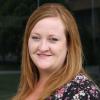The NISE Network runs a series of free online workshops to increase the number of professional development opportunities available to our partners, and create more channels for partners to share their work and learn from each other directly.
Online Workshop: The Science Behind the 2020 Explore Science: Earth and Space Toolkit – Asteroid Mining (Part 3)
Tuesday, March 24, 2020; 2 - 3pm Eastern / 11am - 12pm Pacific
View the recording and resources from the online workshop here
In the future, asteroids and dwarf planets in our solar system could become new sources for materials used in manufacturing, energy production, or supporting humans living in space. But before scientists and engineers can start mining, we as a society need to consider how mining asteroids might change our lives, now and into the future. This online workshop will cover the science behind the Asteroid Mining activity from the 2020 Explore Science: Earth & Space toolkit. After a brief overview of the activity and its resources, our guest presenters, Jonathan Wiener, Professor of Law at Duke University and Jim Bell, a planetary scientist and author in the School of Earth and Space Exploration at Arizona State University, will speak about the science behind and social implications of asteroid mining along with laws on ownership and commerce in space, planetary protection, and contamination issues.
Tuesday, February 4, 2020; 2 - 3pm Eastern / 11am - 12pm Pacific
- Online Workshop: The Science Behind the 2020 Explore Science: Earth and Space Toolkit – Virtual tour of a NASA mission prototyping and testing lab with special guest, George Gorospe from NASA Ames (Part 1)
Tuesday, February 11, 2020; 2 - 3pm Eastern / 11am - 12pm Pacific
Presenters
Max Cawley, Museum of Life and Science
Jeannie Colton, Arizona State University
Jim Bell, Arizona State University
Jonathan Wiener, Duke University
Acknowledgements
This material is based upon work supported by NASA under grant or cooperative agreement award number 80NSSC18M0061. Any opinions, findings, and conclusions or recommendations expressed in this material are those of the author(s) and do not necessarily reflect the view of the National Aeronautics and Space Administration (NASA)







